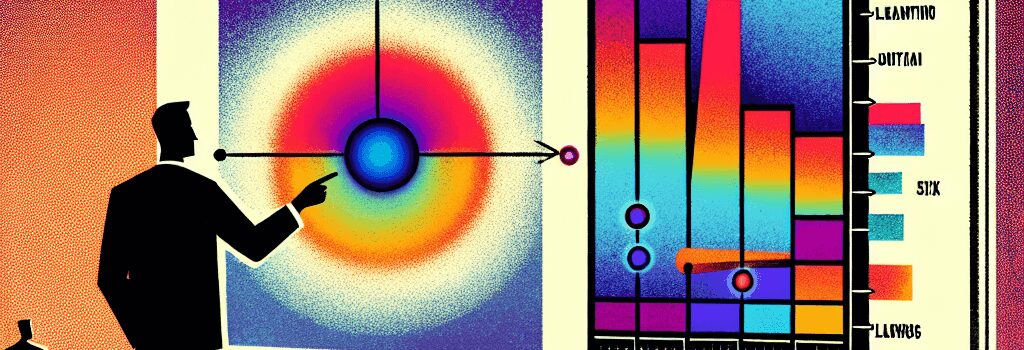Overblown Quantum Dot Conspiracy Theories Signal a Need for QLED Industry Accountability

The Quantum Controversy at a Glance
Recent lawsuits and allegations have thrust QLED TV manufacturers into the spotlight, questioning the veracity of claims around quantum dot (QD) usage. While companies like TCL have long promoted their TVs as featuring billions of quantum dot nanocrystals to boost color performance, emerging tests have raised doubts regarding the actual contribution of QDs to the end display. Industry observers argue that misleading language in marketing materials is sowing consumer distrust, which could undermine both current QLED models and the future of premium display technologies, including OLED TVs and quantum dot electroluminescent displays (QDEL).
What QLED TVs are Supposed to Do
Manufacturers claim that QLED TVs deliver a wider color gamut, improved brightness, and better overall color volume than traditional LCD-LED displays. For instance, Samsung touts their QLED displays as providing a wider range of colors with superior brightness. TCL emphasizes the use of billions of quantum dot nanocrystals, promising industry-leading color accuracy and brightness. When produced with a robust concentration of QDs, these panels can command premium pricing due to their ability to display a broad spectrum of light and dark hues with remarkable fidelity.
Technical reviews, such as those from RTINGS, have documented that high-performance models like the 2024 Sony Bravia 9 and the Hisense U8 achieve almost complete coverage of the DCI-P3 color space and impressive color volume scores. For example, the Bravia 9 reaches 92.35% DCI-P3 coverage and scores 54.4% in color volume tests, setting a benchmark for color realism and detail reproduction. Even older QLED models, like the 2020 Vizio M Series Quantum, show that proper implementation of QDs can result in excellent display performance.
QD TVs Accused of Failing to Meet QD Benchmarks
Recent testing by Samsung, conducted by London-based Intertek, revealed that several TCL models marketed as QLED TVs – including the 65Q651G, 65Q681G, and 75Q651G – did not contain detectable levels of key chemicals (cadmium and indium) commonly used in conventional quantum dot films. This evidence calls into question whether these models truly leverage QD technology or rely largely on cheaper phosphor-based color conversion techniques.
Guillaume Chansin, associate director of displays and XR at Counterpoint Research, explained that while trace amounts of quantum dots might be present, a TV that uses primarily phosphors should not be advertised as being enhanced by true QD technology. This mix-up is particularly concerning for models at the lower end of the market, where cost-cutting measures appear to compromise the promised performance quality.
Technical Deep Dive: Quantum Dots Versus Phosphors
Quantum dots are semiconductor nanoparticles capable of emitting light in narrow spectral bands, which is essential for producing purer colors. Proper integration of QDs results in an optical spectrogram with sharp, distinct peaks – a hallmark of accurate color conversion. However, when phosphors are used as the primary agents for color conversion, the resulting spectrum can broaden these peaks, causing less precise reproduction of intended hues.
Experts have noted that even high-end displays sometimes combine QDs with phosphors to balance cost and performance. For instance, analysis by Palomaki Consulting on TCL models has shown that in certain units, phosphors contribute over 90% of the color output in the green spectrum while only minimal contributions come from QDs. In contrast, premium displays should demonstrate a high ratio of quantum dot influence, ensuring a truly immersive color experience. This technical deficiency not only compromises performance but also calls for transparency in manufacturer disclosure.
Market Implications and Future Display Technologies
The controversy over QD usage is not just a technical debate—it has far-reaching market implications. Overuse of the QLED label without consistent quality standards threatens the credibility of manufacturers. Major players in the industry, including Samsung and LG, are now embroiled in legal disputes that could reshape consumer expectations and regulatory frameworks for display technologies.
The current litigation, which accuses TCL and Hisense of misrepresentation, highlights a broader industry issue: in the race to produce cost-effective high-performance TVs, some manufacturers appear to have diluted the quantum dot promise. These developments risk undermining consumer confidence not only in QLED TVs but also in emerging technologies like QDEL displays that promise even higher performance by fully harnessing QD benefits.
The Call for Industry Standards and Better Testing
Amidst conflicting test results and ongoing lawsuits, there is a growing call from experts for standardized testing protocols. Establishing clear benchmarks for what qualifies as a true QD-enhanced display could help mitigate consumer confusion and ensure that marketing claims reflect actual performance. Industry analysts like Eric Virey from Yole Intelligence stress that self-policing and definitive quality measures are essential to maintain credibility in the competitive market of high-end displays.
More rigorous consumer-friendly testing and transparent publishing of optical spectrograms would provide the necessary clarity. Until manufacturers can reach a consensus on defining and verifying quantum dot integration, buyers may continue to be misled by an increasingly cryptic alphabet soup of terms like QLED and QNED.
Looking Ahead: Transparency and Consumer Trust
Ultimately, the debate over QLED TV marketing underscores a critical challenge in modern consumer electronics: balancing innovation with honesty in advertising. While manufacturers argue that combining QDs with phosphors can offer practical benefits—such as improved brightness and uniformity—the lack of transparency in testing results leaves consumers in the dark.
The industry now faces a pivotal moment. If companies like TCL and Hisense cannot provide clear evidence of their claimed technology, consumer trust may erode, prompting calls for regulatory oversight and stricter labeling standards. As next-generation display technologies emerge, such as QDEL and advanced OLED panels, maintaining credibility in tech claims will be key to sustaining market growth and innovation.
Source: Ars Technica